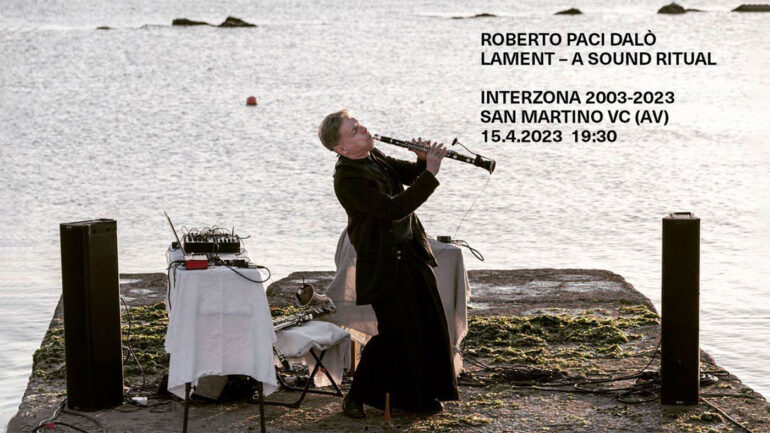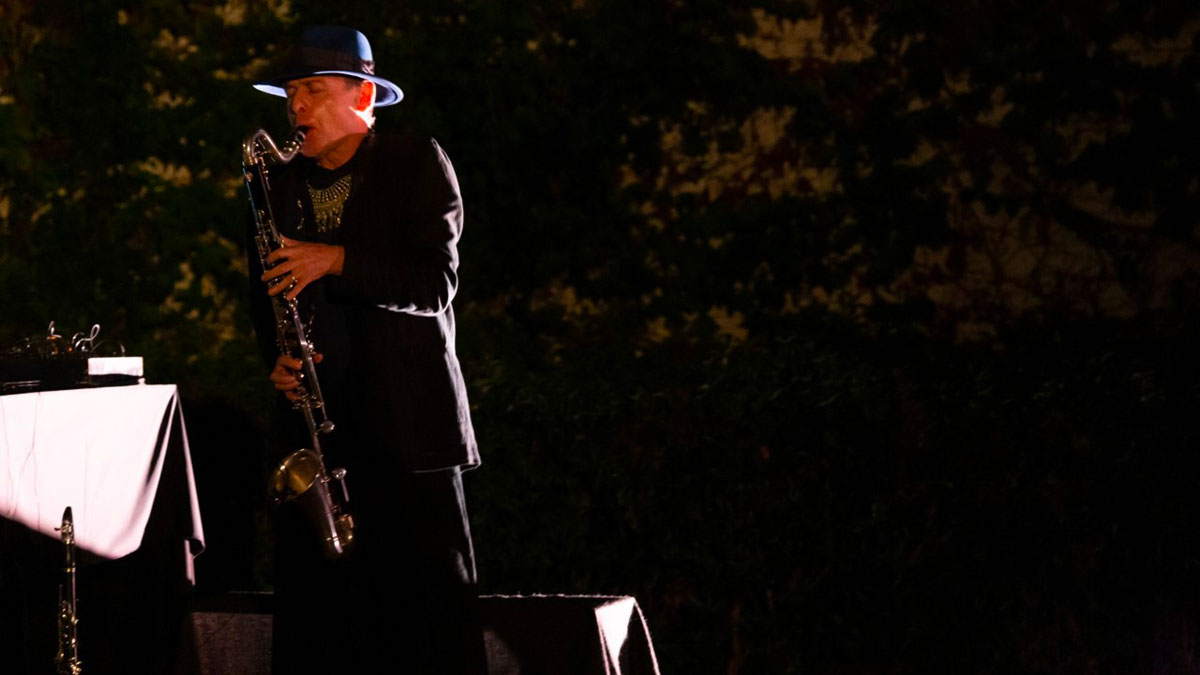
LAMENT is the interaction between acoustic instruments (clarinet and bass clarinet) and electronic device. This sound ritual is also articulated with radio frequencies captured and processed in real time and soundscapes recorded on location. Rather than attending a concert, this solo performance invites the public to enter a living work, moving like an animal, immersive and shamanic.
“ I developed this project in Timisoara in 2021 while preparing Temeswarer Nachrichten (sound installation) and Doyne (concert) invited by Philippe Franck (Transcultures, European Pepinieres of Creation), guest curator of the Sonic Narratives itinerary (last week of October 21) organised by Simultan in Timisoara (Romania).
In music, the lament and later the elegy became a way to mourn in music. It provided a place for melancholy and reflection, dark and deep thoughts, regret and musical solitude. In my research through the lament form I can connect my investigations throughout Jewish, Romanian, Albanian, Greek musics. Very few people know that I play the Highland bagpipes since I was a teen (I’ve got a beautiful instrument from Peter Henderson Ltd.). In Scottish music I’m especially into pìobaireachd music (also Pibroch or ceòl mòr). A “classical” image of this is the solo pipes player facing the stormy sea or slowly walking and playing on the battlements of a castle. The Romanian Doina can be related to the lament form. Béla Bartók linked the Romanian doina to the Turkish/Arabic Makam system. Until the first half of the 20th century, both lăutari and klezmer musicians were recorded using a taksim as an introduction to a tune. The taksim would be later replaced by the doina, which has been described as being similar, though not totally identical to the taksim. The doina is a free-rhythm, highly ornamented (usually melismatic), improvisational tune. The improvisation is done on a more or less fixed pattern (usually a descending one), by stretching the notes in a rubato-like manner, according to the performer’s mood and imagination.
A lament or lamentation is a passionate expression of grief, often in music, poetry, or song form. Laments constitute some of the oldest forms of writing, and examples exist across human cultures. In music, an elegy is rarely a funeral piece but a work of a darker and more somber nature. In the medieval period, an elegy was about death, but by the time of the Romantic period, the elegy had become a personal reflection upon death. If we go back to Laments, in post-medieval music, the lament came to be characterized by a falling bass pattern. This was first used by Monteverdi in his Lament of the Nymph, published in 1638. The young girl of the song is ruing the loss of her beloved, who has betrayed and left her. In poetry, laments are found in the earliest works, from the Illiad and the Odyssey to Beowulf. In the Bible’s Old Testament, there are the Lamentations of Jeremiah.”
Roberto Paci Dalò
Roberto Paci Dalò (It)
Visual and sound artist, composer, musician, director, researcher – his work has been presented in museums, theatres, festivals and biennials around the world. He received the prize “Premio Napoli per la lingua e cultura italiana” and his work has been supported and appreciated by, among the others, Aleksandr Sokurov and John Cage.
Roberto is an artist/expert for the European Commission and a member of the core designers unity of the New European Bauhaus initiative. He teaches Exhibit and Experience Design at Unirsm where he is also the founder and director of Usmaradio, broadcaster and Research Centre for Radiophonic Studies.
His latest book is called Ombre (Quodlibet 2019).
Roberto Paci Dalò (It)

The Interzona Cultural Association – APS deals with the revaluation of rural and marginal territories through study projects, field research and education focused on sound, the arts and technocultures.
It was founded in 2003 in San Martino Valle Caudina, a rural center on the border between Irpinia and Sannio Benevento, located downstream of the mountain massifs of Partenio and Taburno.
Starting from the international festival of arts and new technologies Interferenze new arts festival, the Interzona Cultural Association has experimented, over the years and in various territories (Irpinia, Fortore in Benevento, the Barsento-Trulli area in Puglia, but also Molise, Cilento and Sicily), a series of hybrid formats (residencies, laboratories, workshops, field study projects) merged into a research platform focused on the concept of (neo-)rurality, in which multidisciplinary and critical approaches inspired by New media studies intersect and Cultural and Postcolonial Studies.
The Interzona Cultural Association – APS is a founding member of STARE – Association of Italian Artistic Residences and associate member of ENCC – European Network of Cultural Centres. Among the partnership agreements signed by the association and currently in force, there are those with the ACAC – Aomori Contemporary Art Center (Japan), with the Department of Communication Sciences, Humanities and International Studies (DISCUI) of the University of Urbino “Carlo Bo” and with the Department of Political and Social Studies (“Media Culture Società” Study Center) of the University of Salerno.
Informations
- 15.04.2023 | 19:30
- Roberto Paci Dalò – composition, clarinets, bass clarinets, voice, live electronics
- Interzona 2003-2023
- San Martino VC
- apsinterzona.org/project/ventennale-interzona
Production
- Usma Radio.
- With the support of Transcultures and European Pepinieres of Creation
-
This contextual, meditative and traveling piece was released, in November 2021, on the bandcamp of the Transonic label as part of the No Lockdown Art initiative launched by Transcultures and European Pepinieres of Creation to support contemporary creation, sound and intermedia during confinement.

